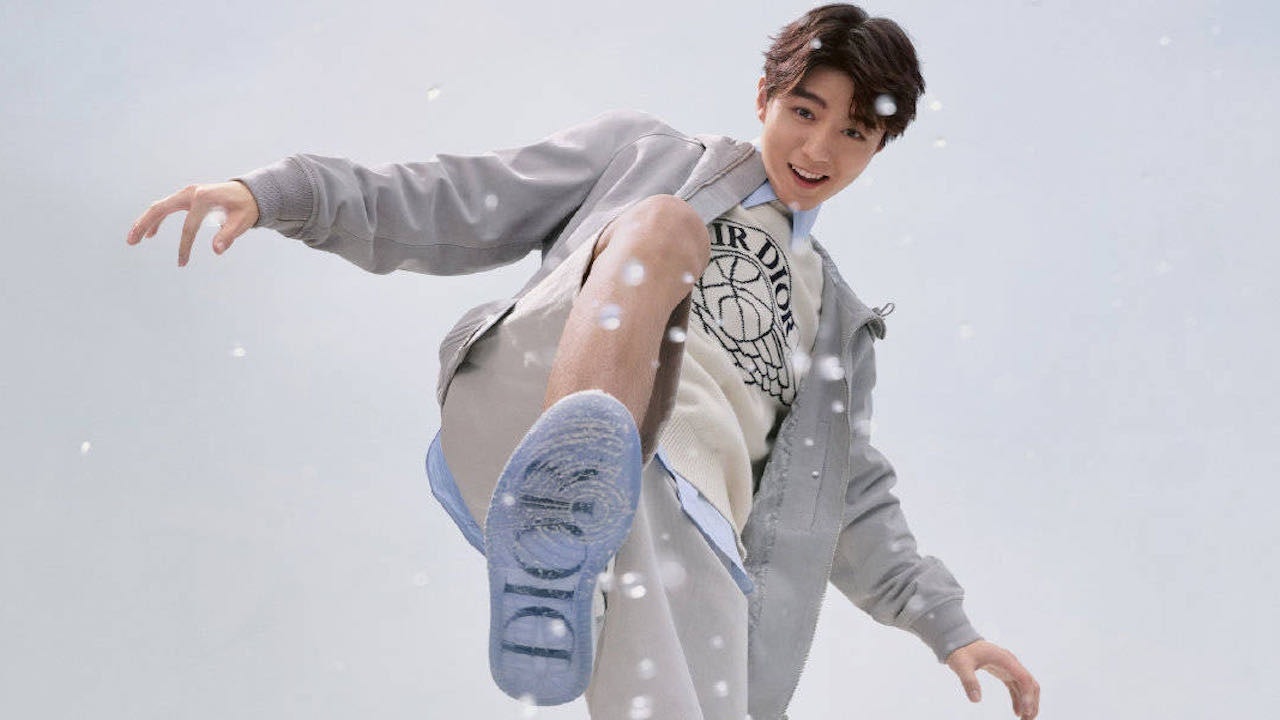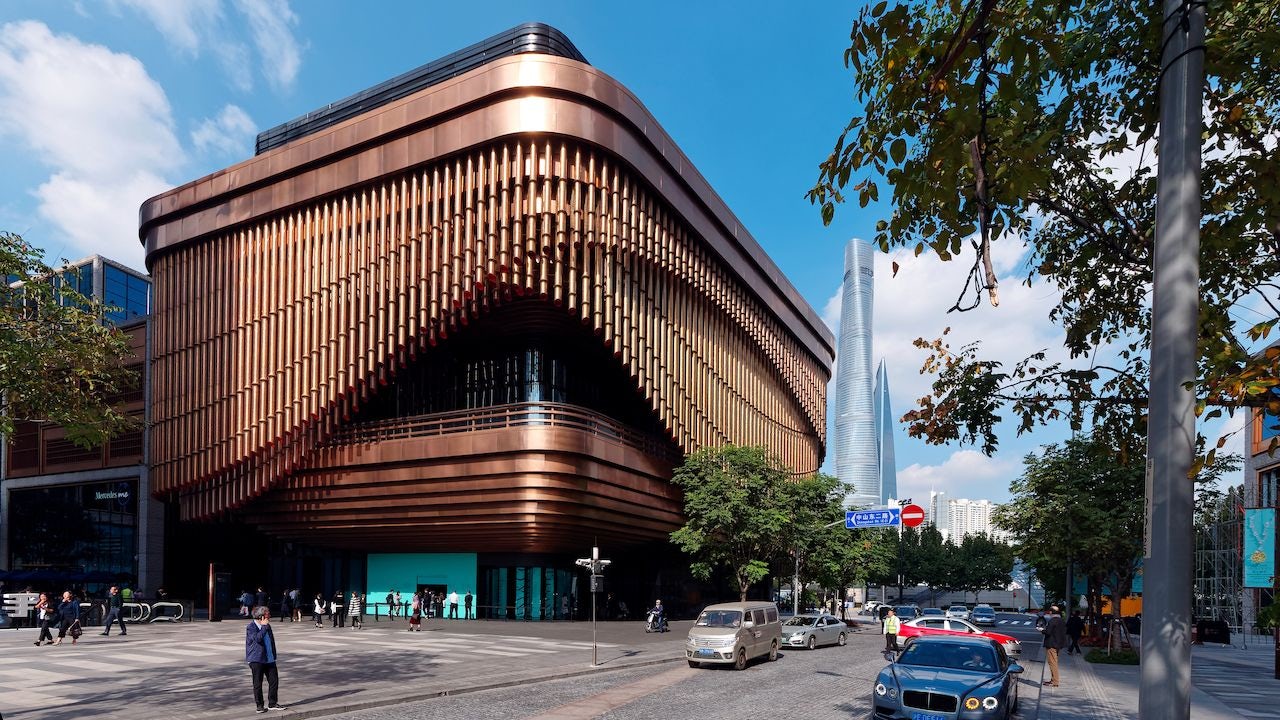A new version of Esquire’s millennial-targeted issue, Esquire Fine, appeared on newsstands across China at the end of March. The cover features the hot celeb and Dior ambassador, Wang Junkai, performing a roundabout kick while dressed head-to-toe Dior.
In fact, the entire issue is cover-to-cover Dior. Inside, the magazine features an exclusive interview with the brand’s creative director, Kim Jones, as well as a series of custom-made, in-page advertisements. Launched before the COVID-19 outbreak, the issue ushers in a remarkable new business model for the magazine where an entire issue is tailored to only one advertiser. But the pandemic has complicated production on its debut.
Normal steps like finding a shooting location, hiring manpower, or borrowing clothes from Paris have proven to be mission impossible. “A lot of photographers and stylists were trapped in their hometowns during the Spring Festival, so we were particularly short of staff,” said the magazine's Chinese spokesperson. “Even if there were enough people to work the shooting site, the site's check-in is very strict, and some studios don’t even allow entry if an ID card is registered to Hubei.”
Yet, after some last-minute scrambling, the March issue was launched on time and performed well, due in large part to the brand’s fan economy. Ten thousand magazines sold out in just a few minutes, and the cover star-related hashtag #wangjunkaifirstmagcover received more than 360 million hits on Weibo, circulating his short video and documentary widely among fan groups.
The menswear magazine may end up being among the lucky few to make it through this COVID-19 period. The epidemic has undoubtedly taken an unexpected toll on various media groups in China, heavily affecting their production capabilities, advertising budgets, and expansion plans.
How the fashion media weathered the COVID-19 storm#
CEO of Huashang Media (publisher of magazines in China such as T Magazine, Kinfolk, NYT Travel, and Drift), Feng Chuxuan, shared some of the challenges he's been facing in a recent interview with Jing Daily. “The previously planned 2020 Summer Olympic content was halted, and all sports lifestyle content from June to August needed to be revised,” he stated soberly. Though the group moved to digital platforms quickly, “offline events hosted by Gen-Z-focused lifestyle magazine Nylon [have been] put on pause, [and] over 30,000 college student associations now turn to Douyin and various WeChat groups for virtual chat."
While many newly-established publishing titles have been swiftly reinventing themselves, the fashion industry’s publishing titan, Vogue, now faces a murky future. Before the epidemic, Condé Nast China was dealing with several executive resignations, which made the group more vulnerable than usual. Tang Shuang, the deputy publisher of Vogue China, resigned at the end of April this year due to style differences, and multiple high-level executives from the GQ China editorial team resigned this year to pursue other opportunities. A person familiar with the situation revealed that many Vogue China staffers were working remotely during the epidemic, causing publication delays. Fortunately, there were no layoffs, but any expansion plans were suspended.
Although much of the global media has taken a hit during the COVID-19 pandemic, domestic fashion titles have held up better than their oversea partners. “In the past eight years, Chinese print media have been hit harder than overseas titles by [China’s] quickly-changing internet landscape, so they’ve become more resistant to changes brought forth by the pandemic,” said Feng.
From print to standard digital#
Most publications have been scrambling in the face of shrinking ad budgets due to the pandemic. “Affected by the epidemic, luxury, beauty, and car brands have stopped or postponed their investment in print media,” said Sarah Si, the chairman of global media agency Dentsu Aegis, to Jing Daily. “As far as we know, Burberry, Coach, Shiseido, and JLR have adjusted their related budgets.”
When print advertising revenue is frozen, publishing houses look at their readers for answers. E-newsletters, WeChat subscription fees, or online courses are a few common ways print publications have diversified their revenue stream, even prior to the pandemic. According to Dentsu's survey beginning in 2014, the overall audience for print media in China may be smaller than in the US or Europe, but their core readership and circulation has been less impacted. For many magazines, serving these loyal readers has become a top priority.
“I used to guide readers on what's trending or not, but now I want to know what content they wish to read,” said Charlie Chin, a Vogue China editor, about how the media is interacting with readers in the post-COVID-19 era. “Everyone is in a cleansing state, and their desire for luxury goods is not as high as before. They will pay more attention to daily necessities.”
Today, traditional readers have evolved into either print “elites” or digital natives, leading to a further polarization of print content versus digital. A newsstand is now a rare sight in China, and an insider who works for a print publication said that it's hard to find one in Shanghai. "People’s reading habits have changed as well,” said Xie Yinglan, a fashion media veteran and the agent behind many top fashion bloggers like Dipsy and FashionModels.
“The only time I read a magazine is at the airport, but I wouldn't buy a monthly issue because it’s too heavy to carry around. But from a market perspective, the quality of print is better, and print is favored by high-net-worth readers.” Xie added that social channels such as WeChat, Weibo, and Douyin are garnering a wider readership for online links, suggesting that the weekly title Grazia China was innovating in the digital realm.
From standard digital to new digital#
Luxury brands are well aware of the advantages and disadvantages of both print and digital media and the types of consumers that each brings. Because of this, long-term print ad budgets didn’t decrease despite a decline in print media inside China, according to Dentsu’s survey.
Many pour money into large media groups such as Hearst, Condé Nast, Trends Media, Modern Media, and Huasheng Media because they guarantee high-quality content and are a prime option for VIP consumers. Yet brands have also increased their efforts in digital media via aggressive and engaging content that’s linked to e-commerce initiatives.
Enter livestream#
“Even content on social media like on WeChat accounts are slowly declining,” said Feng. “Now, livestreams and content commerce are booming.” This is due to the immediate interaction the medium offers. “Print media belongs to intellectuals while short video platforms like Douyin, Kuaishou, Pinduoduo, and even e-commerce sites like Tmall are primary channels where consumers can understand luxury goods,” he added. “As luxury brands bank on the consumption power of lower-tiered cities, these new digital platforms are becoming more relevant.”
But livestream is a new breed of digital that bridges high and low culture, and its “see now, buy now” feature has been a cash cow for many brands during COVID-19, fashion media included.
Within a month, Esquire magazine quickly put together an Esquire Fine collaboration with the headphone brand Bose that delivers an entertaining live broadcast with celebrities and KOLs. But Esquire Fine is very clear about its role for the livestream, stating, “We do not sell goods, but integrate resources and provide creativity.”
But since livestreaming is still young, it doesn’t guarantee results to traditional media. Feng said that inefficient livestreams are more exhausting than bad articles, and the media really needs to think about how to produce a meaningful story via this platform.
As his company’s CEO, Feng even stepped up from behind the scenes to conduct a livestream with the realtor Jin Maofu as a way to introduce the house on Douyin. He invited more than 20 celebrities, attracting a viewership of 60,000. Feng said that he did it because of a personal interest in feng shui and apartment layouts.
Could livestream become the new norm for fashion media? The format of livestream instantly brings readers and content closer and entices immediate interaction between the two. Media veterans Feng and Xie agree it’s an irreversible trend, but the storytelling on livestream can be further enhanced.
Fashion media as creative agency#
To adapt to market demands, many traditional media have taken on the roles of a creative agency by overseeing events, producing videos, and scouting celebrities or bloggers. And the pandemic has accelerated this trend. Xie said that digital department duties will grow exponentially, from planning offline activities to building CRM systems. In the next 4-5 years, Feng wants Huasheng Media to broaden even more and become a full-content service provider by expanding into animation, video production, food and wine education, and even architectural investing.
No matter how content changes, each role in the media ecosystem will still have a purpose. But the idea that print media is dead in the post-COVID-19 era is still premature. In Chinese media houses, their print and digital arms lead in two different directions: Print has further focused on quality content and advertising, while digital keeps pushing the boundaries of interactive media with technologies like livestreaming. What’s the future of fashion media? The sky's the limit — if they can adapt to market changes in the post-epidemic era, that is.

